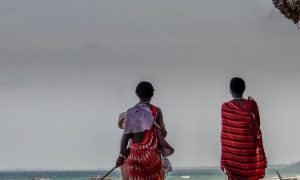Understanding Kilimanjaro Climbing Weather Conditions
Mount Kilimanjaro, Africa’s tallest peak, is a popular destination for adventure seekers looking to conquer its majestic summit. However, one of the most crucial factors to consider when planning a Kilimanjaro climb is the unpredictable weather conditions that can significantly impact the success and safety of your trek.
The climate on Mount Kilimanjaro varies greatly depending on the altitude and time of year. The mountain has its own microclimate, with temperatures ranging from tropical at the base to freezing at the summit. Climbers can expect to encounter rain, snow, hail, and strong winds at different stages of their ascent.
To better prepare for the challenges of Kilimanjaro climbing weather conditions, it is essential to understand the general weather patterns on the mountain. The rainy season typically lasts from March to May and from November to December, bringing heavy precipitation and lower visibility. The dry season, on the other hand, occurs from January to February and from June to October, offering clearer skies and better climbing conditions.
Preparing for Variable Weather on Kilimanjaro Trek
As the weather on Mount Kilimanjaro can change rapidly, climbers must be prepared for a wide range of conditions throughout their trek. Proper gear and clothing are essential to staying comfortable and safe in the unpredictable weather.
When preparing for a Kilimanjaro climb, it is crucial to pack layers of clothing that can be easily added or removed as needed. Base layers made of moisture-wicking material are ideal for keeping sweat away from the skin, while insulating layers like fleece or down jackets provide warmth in cold temperatures. Waterproof and windproof outer layers are also necessary to protect against rain and strong winds.
In addition to clothing, climbers should invest in sturdy hiking boots with good traction to navigate the rocky terrain on Kilimanjaro. A quality sleeping bag rated for sub-zero temperatures is essential for staying warm during cold nights at high altitudes. Other essential gear includes a headlamp, trekking poles, sunglasses, sunscreen, and a first aid kit.
While proper gear is important, climbers should also be mentally prepared for the challenges of Kilimanjaro climbing weather conditions. Altitude sickness is a common concern for climbers due to the rapid gain in elevation, so it is essential to acclimatize properly and listen to your body throughout the ascent. Staying hydrated, eating nutritious meals, and getting enough rest are crucial for maintaining energy levels and avoiding altitude-related illnesses.
Overall, being well-prepared for the variable weather conditions on Mount Kilimanjaro is key to a successful and safe climb. Sunset Africa Safari offers guided tours to Kilimanjaro with experienced guides who are knowledgeable about the mountain’s weather patterns and can help climbers navigate the challenges of the trek. For booking inquiries, please contact info@sunsetafricasafari.com.



